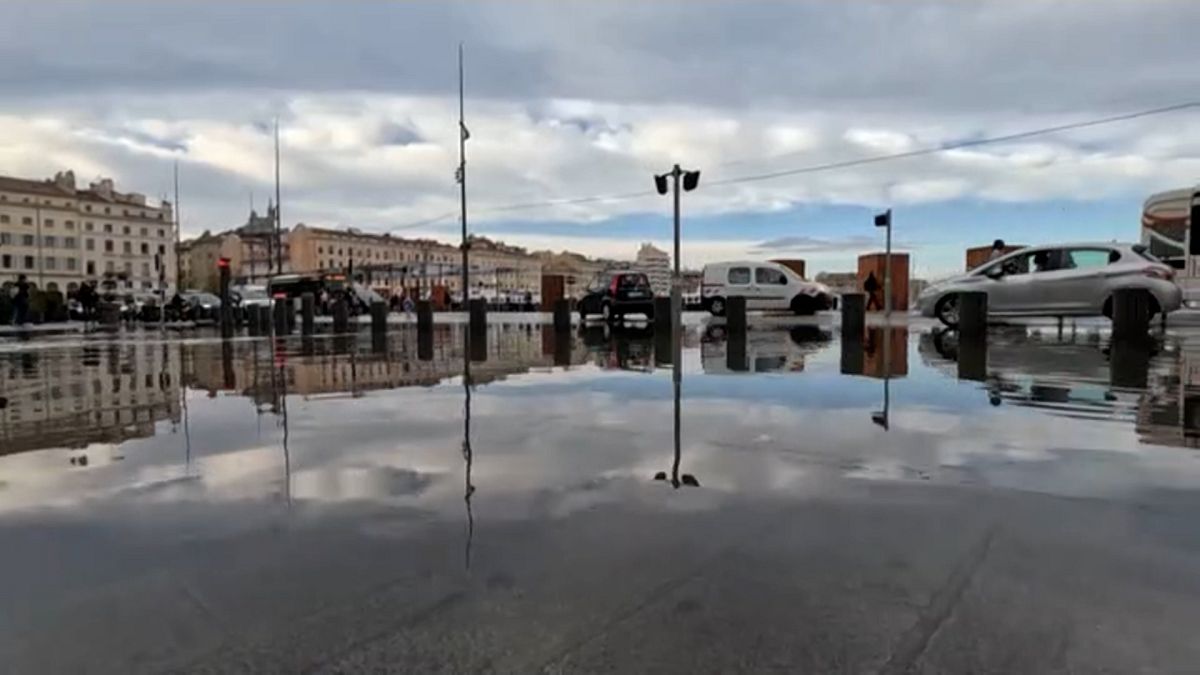Marseille, a port city in France, experienced intense overnight storms that left vehicles trapped and roads submerged. The city mayor, Benoit Payan, urged residents to exercise caution as several neighborhoods, including the old port, were inundated by torrential rains. The heavy downpour came amidst an orange weather alert in certain parts of France, with up to 70mm of rain falling in some areas in less than two hours, equivalent to a normal month’s worth of precipitation. One local resident, whose restaurant was submerged, expressed frustration at the recurring nature of the flooding, stating, “It’s happened several times in September, and now it’s back again in October.” The fire brigade was reportedly called out over 700 times in just two hours, indicating the severity of the situation.
In response to the storms, up to 30 schools in Marseille were closed on Tuesday to ensure the safety of students and staff. Additionally, disruptions were seen in the city’s bus, tram, and metro systems, causing further inconvenience to residents trying to navigate the waterlogged streets. The intensity of the rainfall caught many off guard, emphasizing the need for improved infrastructure and preparedness measures to mitigate the impact of such extreme weather events in the future. Local media coverage highlighted the challenges faced by emergency services, such as the fire brigade, which were inundated with calls for assistance as residents sought help to deal with the aftermath of the storm.
The sudden onset of the storms left motorists stranded in floodwaters, struggling to navigate the submerged roads and seek higher ground. This situation underscores the vulnerability of Marseille to heavy rainfall and raises concerns about the city’s ability to cope with the increased frequency of such extreme weather events. As climate change continues to impact global weather patterns, it is crucial for cities like Marseille to prioritize resilience planning and infrastructure investments to protect residents and minimize the disruption caused by flooding and other natural disasters. The city’s historic port, a popular tourist attraction, was among the areas most affected by the flooding, highlighting the economic implications of such events on local businesses and livelihoods.
City officials and emergency response teams worked tirelessly to assist residents and mitigate the impact of the storms, but the scale of the flooding posed significant challenges to their efforts. The closure of schools and disruptions to public transportation further compounded the difficulties faced by residents in navigating the city and accessing essential services. The recurrence of flooding events in Marseille, as noted by a local resident, underscores the need for sustained action to address the underlying causes of urban flooding, such as inadequate drainage systems and urban planning practices that exacerbate the risk of water-related disasters. Moving forward, it is essential for the city to invest in infrastructure upgrades and implement comprehensive flood risk management strategies to build resilience and protect vulnerable communities from the impact of extreme weather events.
As the cleanup efforts begin in Marseille following the devastating storms, residents are left grappling with the aftermath of the flooding and seeking support from local authorities to recover and rebuild. The resilience of the city’s residents in the face of adversity is evident as they come together to support one another and work towards restoring normalcy in their communities. However, the long-term sustainability of Marseille will depend on concerted efforts to address the root causes of urban flooding and implement proactive measures to reduce the city’s vulnerability to extreme weather events. By prioritizing climate adaptation and resilience planning, Marseille can build a more secure future for its residents and ensure that the city is better equipped to withstand the impacts of climate change in the years to come.











